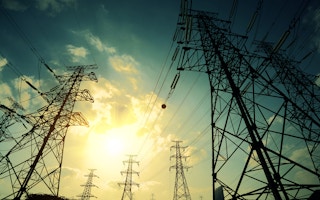A current ASEAN action plan for energy integration seeks to establish a regionwide electricity grid and energy market but the plan has suffered from long delays.
The Nordic power pool model recommends that national governments simplify their approach by allowing companies to sell electricity across the border at transparent prices set by the market. The exchange rate is separate from the price consumers have to pay, which each country will have to determine on their own.
“This piggybacks on what Europe has done for the last 25 years, then Southern Africa for the last 10 years. So essentially, the technology is there,” Hans-Arild Bredesen, CEO of Nord Pool Consulting in Norway, tells SciDev.Net on the sidelines of the Asia Clean Energy Forum 2016 held in Manila (6-10 June). “We just need to adapt it to South-East Asia.”
Bredesen says that the model could work even better in the ASEAN from the start because some countries or parts of countries in the region have a surplus of energy at certain times of the year. They would possibly be more inclined to sell it than the 12 Southern African countries that adopted the model almost all of which have electricity shortages.
Nawal Kamel, director of the ASEAN energy market integration initiative and a visiting economics professor at Chulalongkorn University in Thailand, says the model could go a long way to increasing access to renewables across the region. For instance, Cambodia, Laos and Myanmar have lots of renewable energy that could be dispersed throughout the region and possibly decrease overall reliance on coal.
“
This piggybacks on what Europe has done for the last 25 years, then Southern Africa for the last 10 years. So essentially, the technology is there.
Hans-Arild Bredesen, CEO, Nord Pool Consulting
Kamel says over 127 million people do not have access to electricity in the ASEAN so it is not a matter of affordable price, but of buying and accessing electricity. “We have to look into the possibility of a transboundary grid in areas where it makes sense geographically and economically,” she adds.
But moving from theory to practice presents obvious challenges. Southern Africa is a landlocked continent whereas South-East Asia is a sprawling archipelago, which creates infrastructure challenges.
Engineers will have to figure out how to cope with technological issues, such as how to connect countries that have different frequencies and voltages. But good examples show this has been overcome in other regions.
Philip Andrews-Speed, principal fellow at the Energy Studies Institute at the National University of Singapore, tells SciDev.Net that the Nordic model has received positive response from the ASEAN Power Grid Consultative Committee as well as from senior officials for energy. Advocates are now pushing for a feasibility study.
Andrews-Speed hopes the outcome will encourage at least some South-East Asian countries to sign up. “Not everybody needs to join at the start. As long as a few people are prepared to start then you’re in with a chance,” he says.
This article was originally published on SciDev.Net. Read the original article.

















